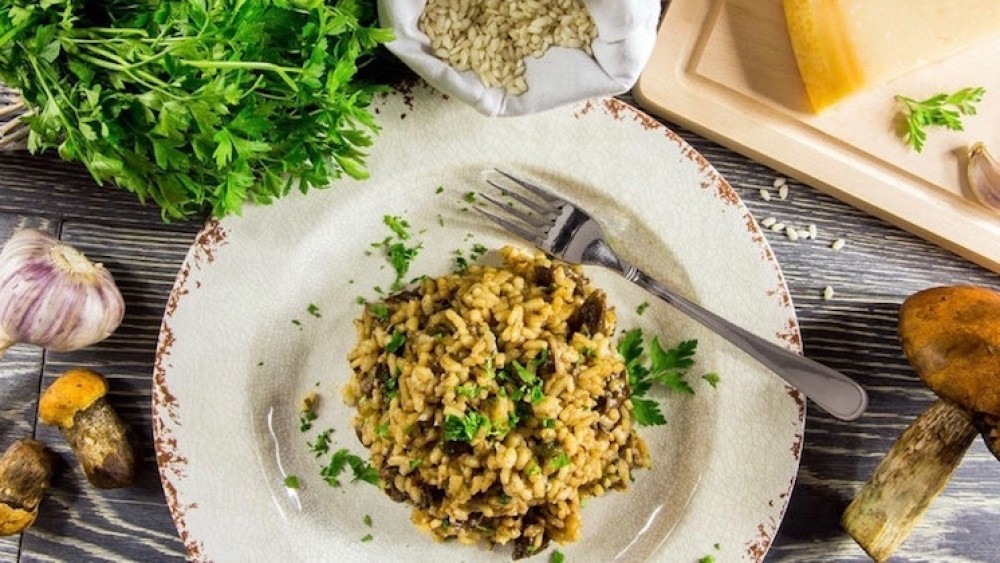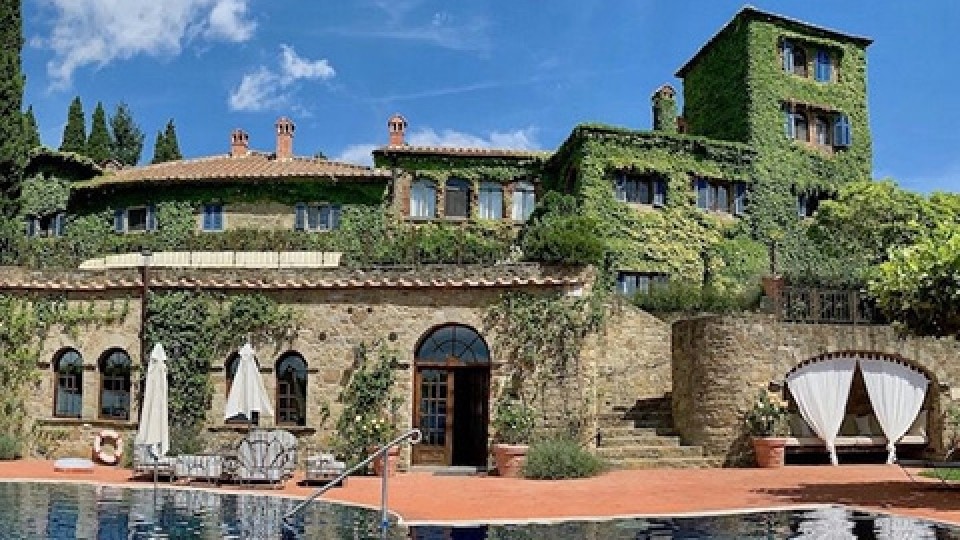Risotto: A classic Italian dish that changes with the seasons
March 30, 2016

Risotto: A classic Italian dish that changes with the seasons
What about a delicious asparagus risotto in spring, or with zucchini in summer and Porcini in fall? Learn to make this wonderful dish at Tuscookany this year.
Welcome back to the kitchen of Tuscookany the home of cooking vacations in Tuscany. Today. We talk about one of the classic dishes of the Italian culinary landscape, an irresistible treat for all those who love healthy and tasty food. The Italian risotto was born in Naples, or at least this is what the Napoletani claim. Whether or not this is true, it’s a fact that the people of Naples were among the first food lovers to conceive the risotto as a stand-alone dish. This said, throughout the culinary history of the Italian peninsula, these magical grains have had an enormous success in Northern Italy, where there is enough water for its cultivation. Thus, while in Naples it has never had the power to substitute pasta, in Northern Italy risotto earned its place as a protagonist.
The story of an accident
It was 1385. Milan was welcoming an army of artists and craftsmen, all ready to contribute to the construction of the Duomo, a huge project rich of cultural stimuli that remained unfinished for decades. One of the artists was a Flemish named Valerio Perfundavalle and his task was to paint the windows. In order to do so, he devised a special yellow paint that contained a colour derived from the pistil of some flowers: saffron. The work was hard, there wasn’t much time, and the glass master was eating a bowl of rice without leaving the scaffolding. One day, by accident, some saffron fell in the rice, colouring it instantly. Mr. Perfundavalle found it beautiful, but was undecided about what to do. Then he thought: "it's just a plant, it won't make me ill". That was how he discovered that the taste was yummy. This story is in all probability a legend, but the date and place of birth of the risotto Milanese, probably the most famous risotto in Italy, coincides.
The flavour of the seasons
Undoubtedly, despite the fact that Italy is not among the oldest and the largest producers of rice in the world, the Italians have created many variations of risotto recipes known all over the world. As a matter of fact, the recipe is a masterpiece. At Tuscookany cooking classes in Italy you will learn that using the starch naturally contained in rice, the result is a harmonious, creamy, elegant and exquisite dish that has little in common with the simple rice, often boiled, used in many cultures around the globe. The cooking process itself is quite elaborate. It starts with a soffritto, then the toasting of the rice that allows the grains to become translucent and release an intense fragrance. Once that’s done, liquids enter the scene, added gradually so that the grains can absorb them. The final touch is called mantecatura – i.e. the introduction of fat combined with vapour that invites the flavours to blend.
Types ot Risotto
As for the various types of risotto, often the most successful and comforting flavours are those evoked by the seasons. So in the misty autumn days, the smell of red wine and porcini mushrooms will fill the nostrils and the palate of mossy aromas. During the cold winter, a risotto strictly served hot, with bitter radicchio and a sturdy cheese, it’s like a warm embrace coming from the inside. With the arrival of spring, here is the risotto with the spicy flavour of green asparagus. And if you want to add some colours for Easter day, you can add artichokes, peas and baby carrots. During the summer, risotto can absorb the perfume of the sun, with the help of tomatoes, and when the summer begins to step towards its end, a pumpkin risotto is the perfect consolation, remembrance of the sun slowly fading away.
Mistakes to avoid
Around the world, people make many mistakes when they try to imitate the real Italian risotto. For instance, some of them wash the rice. The rice that you use in the preparation of risotto it’s already processed, so it contains nothing that needs to be washed out. All that is achieved by washing it is the removal of the starch, which is a magical ally indispensible for a creamy recipe. Plus, very often onions and other vegetables are cooked in oil and the rice is added to the same mix. However, the processes should be separated: the onion should be sauté over low heat, while rice is roasted at very high temperature to release its aroma. The best procedure requires cooking the soffritto in a pan and toasting the rice in another, and then mix the two before adding the liquids. Plus, the mantecatura requires butter, sometimes cheese, never oil. Butter, in fact, merges perfectly with the starch giving the risotto its soft notes.
We look forward to welcoming you at Tuscookany – Cooking vacations in Tuscany !
Please share your thoughts about Risotto? We’d love to hear from you in the comments below:

Interested in our cooking courses at one of our Tuscan villas?
Do you want to enjoy our Tuscany cooking classes with plenty of time to explore in your free time, all while staying in an amazing villa?
Reviews
How our guests experienced the Tuscookany courses
Reviews from our former guests made about their visit to Tuscookany on TripAdvisor, facebook, Twitter, Google, Chow and Yelp.










